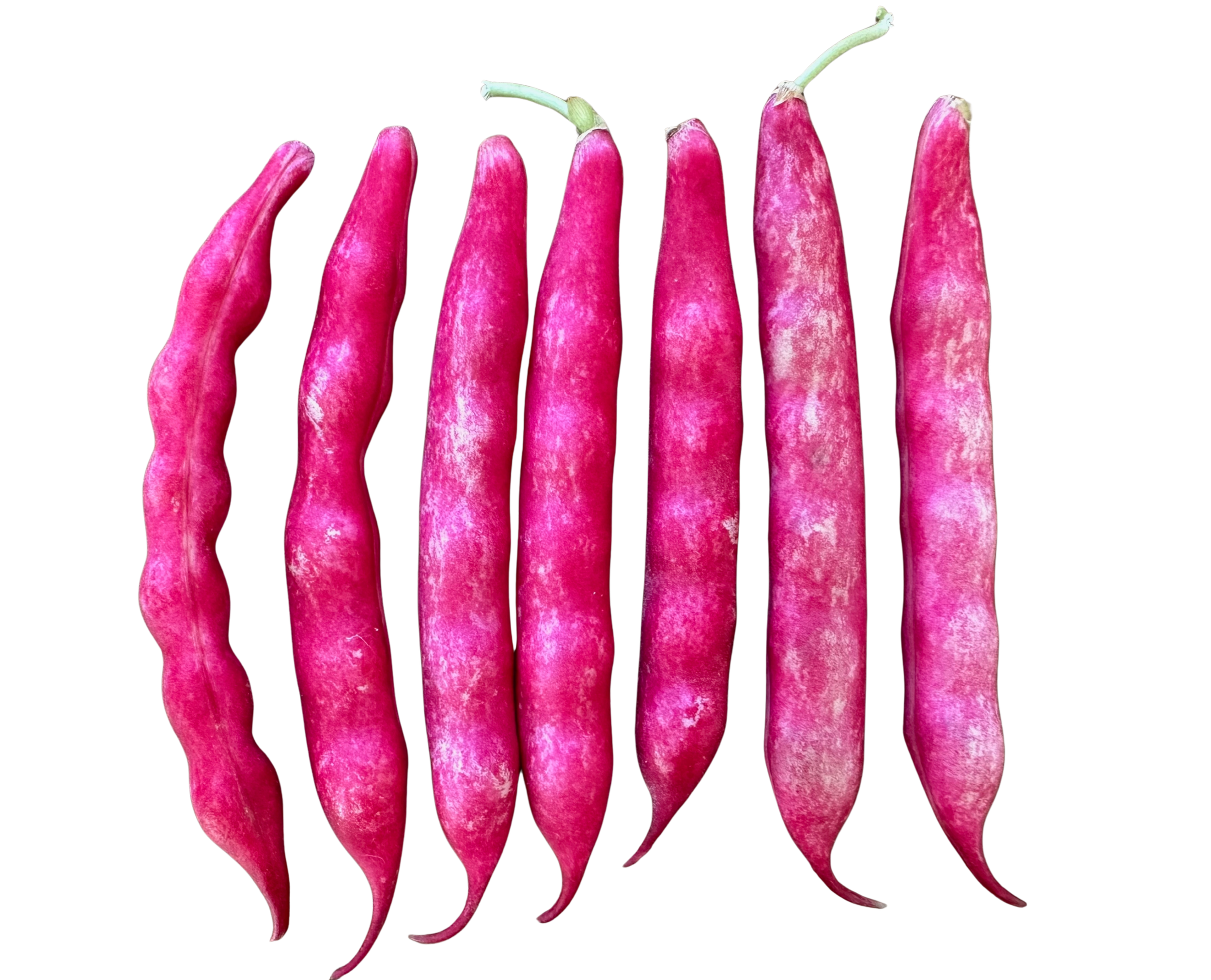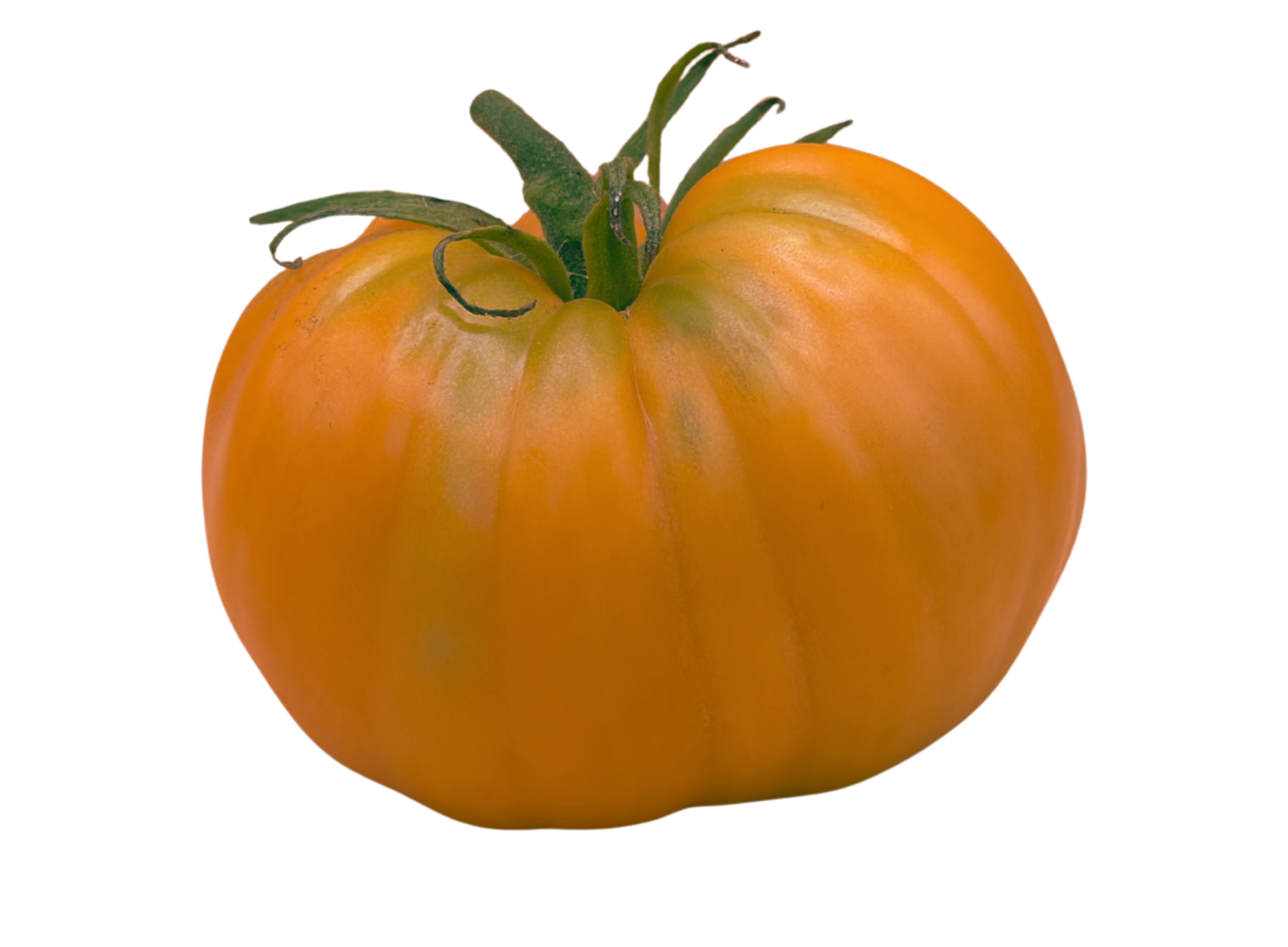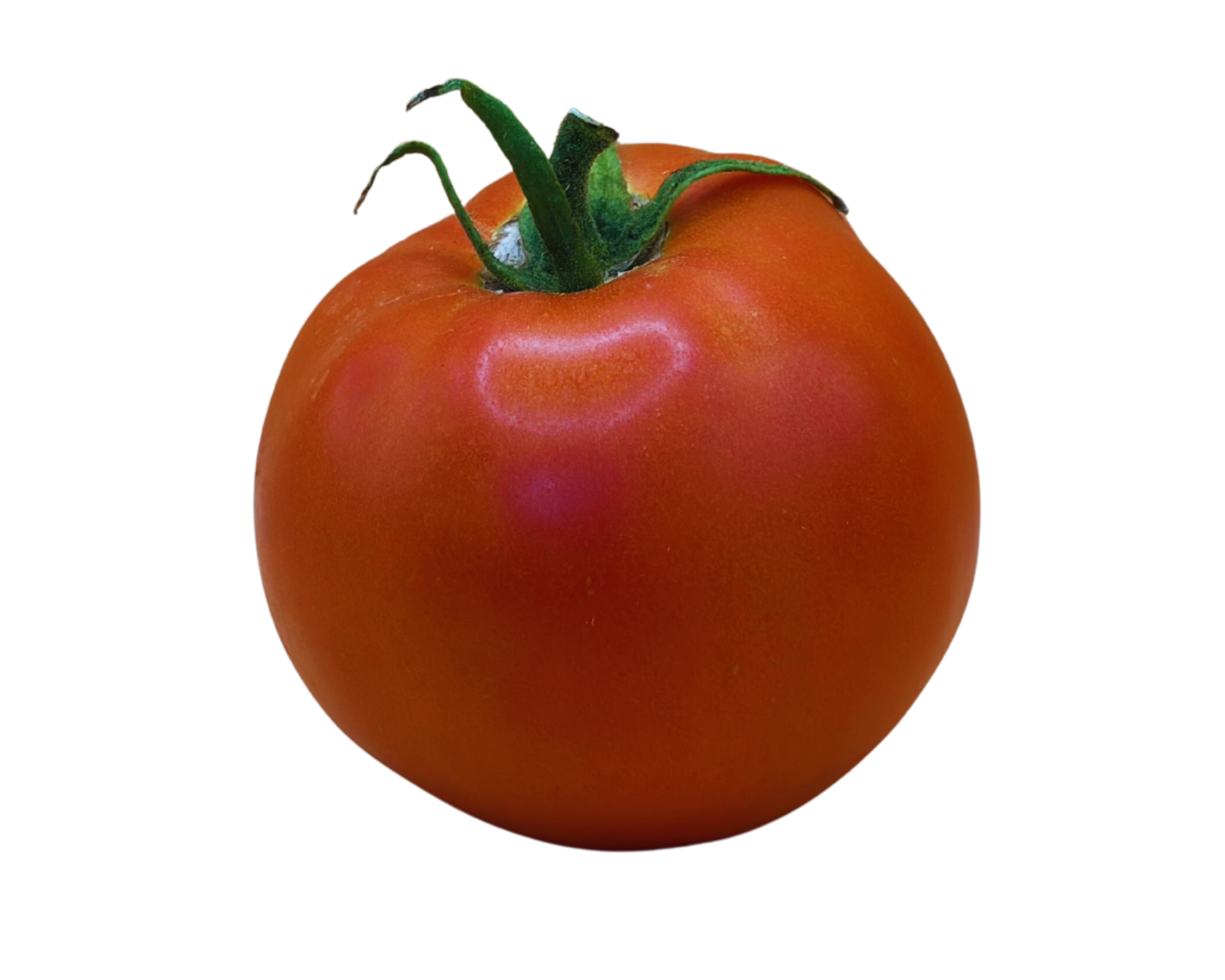
All About Garlic
For everything garlic, you’re in the right place! Learn about garlic varieties and how to grow your own garlic at home.
Garlic Types & Varieties
Hardneck Garlic
Hardneck garlic forms a flower stalk, or scape, which leaves a hard stem in the middle of the garlic bulb. This type produces fewer, but larger cloves. These varieties have stronger flavors than softnecks, but don’t store as long. You typically won’t find this type in the grocery store due to their shorter shelf life. 5-10 cloves per bulb; 45-60 cloves per pound.
Available Varieties:
Asiatic: We offer Korean Red, approximately 45 cloves per pound.
Creole: We offer Ajo Rosado Chileno/Chilean Rose, approximately 40-50 cloves per pound.
Porcelain: We offer Mount Hood, approximately 40 cloves per pound.
Purple Stripe: We offer Chesnok Red, approximately 50 cloves per pound.
Rocambole: We offer Bavarian Purple, approximately 60 cloves per pound.
Turban: We offer Italian Mountain Red, approximately 45 cloves per pound.
Softneck Garlic
Softneck garlic does not form a flower stalk, or scape, which leaves a more pliable stalk that is perfect for braiding. This type produces more, but smaller cloves. These varieties are not as strongly flavored as the hardnecks, but store significantly longer. This is the type you see in the grocery store due to shelf life. 6-18 cloves per bulb; 60-70 cloves per pound.
Available Varieties:
Artichoke: We offer Polish White and Transylvanian, approximately 60 cloves per pound.
Silverskin: We offer Mt. St. Helens, approximately 60-70 cloves per pound.
Elephant Garlic
This bulbing leek may grow like garlic and look like (gigantic) garlic, but we know better! Grows a flower stalk/scape similar to hardneck garlic. Sometimes has little yellow corms or bulblets attached to the bulbs that yield a single-cloved bulb or ‘rondelle’ when planted; this rondelle can be re-planted and will yield a segmented, regular bulb. Storage length is in between hardneck and softneck garlic.
Available Varieties:
We offer Charley’s Elephant. Approximately 8-20 cloves per pound.
Storing Garlic
Whether you’re storing our culinary or seed garlic, you’ll want to store it in a cool, dry area with good ventilation. We store ours in netted bags or woven baskets. Do not store in paper or plastic bags, or the fridge - and do not freeze!
Our garlic braids should be hung by the loop on the back in a place out of direct sunlight - a cool, dry area will help your garlic stay fresh longer.
Growing Garlic
How much garlic seed to order
Each clove of garlic grows into one bulb.
First, figure out what area you’re going to plant your garlic in. Measure the width and length of your growing area. For example: your raised bed is 4’ by 4’, or 48” by 48”.
Now you need to decide on clove planting spacing. You can do a 6” x 6” grid, or offset to 6” x 8”. Let’s use 6” x 6” for this exercise. [Note: elephant garlic should be planted 8” to 12” apart.]
48” divided by 6” = 8, 8 rows x 8 spaces = 64 cloves needed.
Our Garlic Types and Varieties section has some general clove counts per pound. Let’s say you want to plant Chesnok Red, a purple stripe hardneck. Purple stripes have approximately 50 cloves per pound, so you’d need about 1.5 pounds to fill your planting space. Any leftover cloves are of course great for eating!
Planting Seed Garlic
Plant your seed garlic in the fall. Here in Cottage Grove, we aim to do our planting around October 15. This date can vary based on where you are; check with your local ag extension to determine the best time. Ideally, you want to plant 6-8 weeks before the ground freezes. In southern climes, you may plant in early spring.
Prepare your planting site. Garlic likes a ‘full sun’ area, just like other garden plants. Test your soil to determine if you have any major nutrient deficiencies. Garlic likes well-drained soil, so improve yours with organic matter/compost, if needed. Gardeners in rainy climes can also form raised beds to help with drainage. We add granular organic all-purpose fertilizer to the soil right before planting.
‘Crack’ your seed bulbs and separate the individual cloves. You do not need to peel your cloves - leave the skins on. Sometimes the skins may brush off in areas and that’s okay; plant with the skins as intact as possible. Based on the spacing you determined, plant the cloves approximately 2-3” deep with the pointy side up and the flat, root plate down. Your cloves should be oriented as if they were in the bulb with the root-side down. Mulch with straw or leaves to protect from winter rains or snow and suppress weeds.
Storing Seed Garlic
Do not ‘crack’ your bulbs apart until ready to plant - store them whole, as shipped. If you do have some cloves peel off the side, they should keep fine.
Store in a cool, dry area with good ventilation. We store ours in netted bags or woven baskets. Do not store in paper or plastic bags, or the fridge - and do not freeze!
Garlic Growing Season
Depending on your area, your garlic should start growing before the end of the year. This is normal! They are hardy plants and can easily handle low temperatures.
In January/February, when you start noticing the garlic growing more actively, fertilize again with complete granular or foliar fertilizer. A great benchmark for this: when the daffodils start sprouting is when your garlic is also becoming more active.
Throughout the growing season, keep your growing area free of weeds. Garlic does not tolerate competition well, and weeds can result in smaller bulb sizes.
As spring progresses, you can fertilize one or two more times, if needed, once a month. Keep soil watered if you have dry spells. We stop fertilizing by April 15, but again, this date may differ for your area.
Pests and diseases: check with your local ag extension to see what challenges your garlic may face in your area, and how to properly and safely deal with them.
Scapes, or flower stems, will appear on your hardneck garlic varieties and elephant garlic. Wait to pull or cut them until the scape has made one full curl. They are great to eat! If you leave the scapes to fully form and flower, they will sap energy from the plant and result in smaller bulbs.
As you get close to harvest time, withhold water if possible to help with dry-down and prevent mold and rot.
Harvesting & Curing Garlic
Each garlic leaf is a bulb wrapper. Garlic plants will start to ‘dry-down’ or have their leaves turn yellow then brown from the bottom up.
Once the bottom ⅓ to ½ of the leaves are dried down, harvest your garlic. There is a bit of an art to this and different varieties can behave differently, but it is better to harvest a bit early versus too late.
Loosen the soil around/under the plants with a shovel, or pull gently if your soil is loose enough. Brush dirt off of bulbs and roots. Do not wash off with water, as this may cause mold or rot to form while curing.
Hang garlic or lay on racks in a cool, dry place with good airflow out of direct sunlight to cure. You may need to use a fan or have to bring bulbs into a drier building if you’re in a wetter area.
Garlic is properly cured when the leaves and stems have completely dried down and the bulb wrappers are papery. You can then remove the outer dirty papers to clean, trim the roots, and cut the stalks.
What’s the Difference Between Culinary & Seed Garlic?
Sorting & Grading Garlic
Garlic is classified into grades by diameter - the width across the bulb. While the USDA only classifies Grade A garlic as being “greater than 1.5 inches in diameter,” garlic growers use more distinctions for size grades. When we sort our garlic after harvest, we measure the diameter of each bulb and sort them into different size groups.
Culinary Garlic
Culinary garlic, or food garlic or eating garlic, is under 2” in diameter, sold as full bulbs. It isn’t “seconds,” or defected, just smaller than seed grade. It’s perfect for eating and may even store a bit longer than seed garlic due to the smaller size. We begin shipping our larger grade first, so order early for the large culinary bulbs.
Culinary loose cloves are a great budget-friendly way to enjoy our garlic, whether for smaller sampling quantities or bulk that’s easy to use for baking and canning needs. Sometimes, we damage our garlic bulbs, have some bulbs that are misshapen, or have bulbs with only one blemished individual clove. We don’t sell bulbs that don’t meet our grading standards, so our loss is your culinary gain! You will receive undamaged cloves that are cracked apart upon order to ensure freshness. Please note that loose cloves do not store as long as whole bulbs.
Seed Garlic
Planting cloves from the largest bulbs results in larger bulbs. Seed garlic is our best and largest grade of garlic, sold as full bulbs. Seed grade is over 2” in diameter and has no defects - this applies to the Colossal, Super Jumbo, and Jumbo/XL grades above. Colossal and Super Jumbo are premium and are usually held back by growers for their own seed stock, while Jumbo/XL is what is typically sold for seed stock. We offer Jumbo as our default seed garlic; however, some years we may have extra Super Jumbo and Colossal to sell, which will be denoted and priced as premium. You can of course also eat seed garlic - the larger cloves are easier to peel and a true delight to cook with.
Here at Lone Crow Farm, we grade and sort our garlic very strictly; the diameter classes used above are our minimum diameters, not the maximum. That means we provide consistently larger garlic that might actually be classed as a bigger size at other garlic growers.
Additional Garlic Resources
Web Links
Find your local Ag Extension office
Ted Jordan Meredith’s Garlic Analecta Blog
Books
Growing Great Garlic by Ron Engeland
The Complete Book of Garlic by Ted Jordan Meredith
Growing Vegetables West of the Cascades by Steve Solomon
Shop Farm Fresh Goods

Cooking With Garlic
Check out our blog for deilcious garlic and garlic scape recipes!













